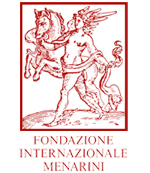
The health of our heart depends on us
There are numerous risk factors that we can reduce, starting from nutrition, a sedentary lifestyle and smoking
Instead of the BMI, body mass index, consideration should be given to the abdominal circumference and distribution of body fat
Physical activity is cardio-protective, even in the absence of weight loss
The reaction of the intestinal bacteria to incorrect diet is one of the causes of an increase in cardiovascular risk
STOCKHOLM, 6 DECEMBER 2017 – We are largely masters of our own destiny, at least as far as the health of our heart is concerned. This is the message launched by the cardiologists who took part in the symposium “Cardiometabolic Risk and Vascular Disease: from Mechanisms to Treatment” held recently in Stockholm by the Karolinska Institute of Stockholm with the support of the Fondazione Internazionale Menarini. “An abdominal circumference exceeding the average, plus cholesterol, glycaemia and blood pressure above the recommended levels are the characteristics of the metabolic risk, one of the main causes of cardiac and vascular diseases”, explains Francesco Cosentino, Director of the Cardiology Unit of the Karolinska Institute & Karolinska University Hospital of Stockholm. “This is a condition that affects approximately 25 percent of men and an amazing 27 percent of women. We are therefore talking about very high numbers, equal to just on 14 million individuals in Italy, a number that is even more staggering if we think about Europe and the United States, a country where one in every three people is overweight. If we rule out the factors that we can’t change, such as a family history for cardiovascular disease or age, the increase in the risk of disease for our heart depends on us and on the good or bad habits of our lifestyle”.
Jean-Pierre Després, Director of Research in Cardiology at the University of Laval, Canada, emphasises the relationship between cardiovascular health, obesity, abdominal circumference and distribution of body fat. “Obesity is historically considered to be an unhealthy condition and associated with a high number of diseases. However, the increasingly greater use of the body mass index (BMI, expressed according to a formula that relates weight with height) as a clinical measure for defining the correct weight, overweight and obesity, has led to the publication of results that have left many doctors and part of the public perplexed about its contribution against cardiovascular diseases when compared with other risk factors that have been identified. In particular, a greater abdominal circumference than normal, and consequently the concentration of body fat in that area, represents a precise indicator of an increased risk of cardiovascular diseases. As a result, the abdominal circumference should be considered a valid measure of abdominal adiposity and identified as a relevant therapeutic target. Other risk factors include the patient’s age, gender, level of physical activity, quality of diet, smoking and the genetic predisposition to cardiovascular and other diseases. Even more than diet, moderate physical activity contributes towards reducing the cardiovascular risk and it is important to be aware of the fact that physical activity is cardio-protective even in the absence of weight loss. In short, the indications suggested for a healthy heart include no smoking, a BMI of less than 25 kg/m2, the practising of moderate physical activity (150 minutes a week), followed by a healthy diet. The favourable biological factors include cholesterol below 250 mg/dL, blood pressure below 120 and 80 mm/Hg, the absence of diabetes and blood sugar levels below 100 mg/dL”.
Thomas F. Lüscher, Director of Cardiology at the University Hospital of Zurich, indicates how the relationship between some foods and the bacterial flora can explain the increased cardiovascular risk in people who follow an incorrect diet. “Cardio-coronary diseases are considered to be mainly due to dyslipidaemia and inflammation, while intestinal bacteria have only recently been included in the group of protagonists in the pathogenesis of cardiovascular diseases. It is now well known that the Western diet rich in red meat and fat favours cardiovascular diseases, also because it has significant consequences on the intestinal bacteria and their interaction with metabolism. The increased intake of foods rich in fats and which favour a rise in insulin, increase the risk of cardiovascular diseases, diabetes, dyslipidaemia and systemic inflammation. In particular, in people who eat a lot of red meat there is an increase in TMAO, (trimethylamine N-oxide), a substance produced by the intestinal bacteria in the digestion of carnitine, contained in red meat. High levels of TMAO are related to a change in the metabolism of cholesterol and atherosclerosis and they are highly predictive of the risk of cardiovascular diseases. In short, the main message for nutritional recommendations is extremely clear: follow a healthy diet that includes abundant quantities of fruit, vegetables, cereals, pulses, nuts and fish, and limit the intake of red meats, sweet foods and sugary drinks”.